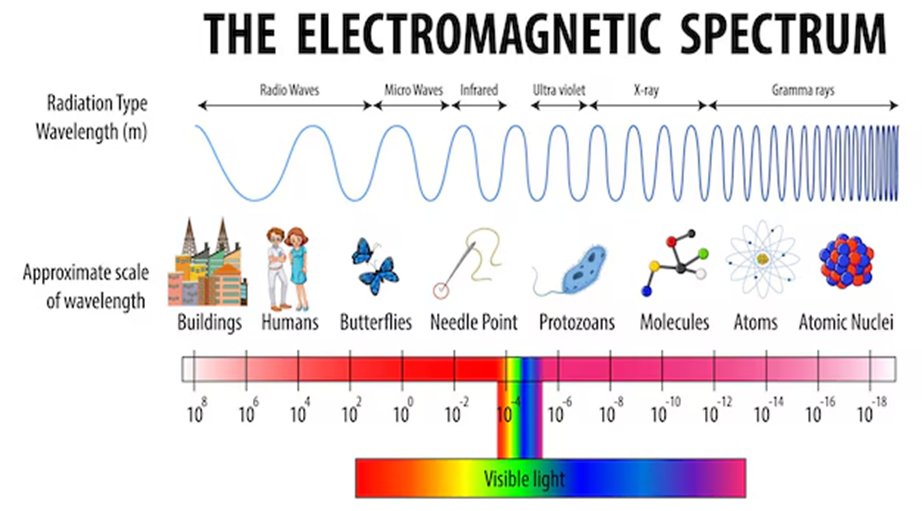
Electromagnetic radiation is a fundamental concept in physics, describing the propagation of energy through space in the form of electromagnetic waves. These waves are characterized by their frequency, wavelength, and amplitude, and they encompass a wide spectrum of phenomena, ranging from radio waves to gamma rays.
Understanding electromagnetic radiation is vital in fields such as physics, engineering, telecommunications, and astronomy, among others.
A comprehensive overview of electromagnetic radiation:
Nature of Electromagnetic Radiation:
- Wave-Particle Duality: Electromagnetic radiation exhibits both wave-like and particle-like properties, a concept elucidated by quantum mechanics. This duality means that electromagnetic radiation can behave as waves (with characteristics like frequency and wavelength) and as particles (photons) with discrete energy.
- Speed of Light: Electromagnetic radiation travels through a vacuum at the speed of light, denoted as “c,” approximately 299,792,458 meters per second (m/s) in a vacuum. This speed is a fundamental constant of nature.
- Electromagnetic Spectrum: Electromagnetic radiation encompasses a broad spectrum of wavelengths and frequencies, organized into different regions such as radio waves, microwaves, infrared radiation, visible light, ultraviolet radiation, X-rays, and gamma rays. Each region has distinct properties and applications.
Properties of Electromagnetic Waves:
- Wavelength: The distance between successive peaks or troughs of a wave. It is denoted by the symbol λ (lambda) and is measured in meters (m) or other units like nanometers (nm) or micrometers (µm).
- Frequency: The number of wave cycles passing through a fixed point per unit of time. It is denoted by the symbol f and is measured in hertz (Hz), where 1 Hz equals one cycle per second. Frequency and wavelength are inversely proportional, as higher frequencies correspond to shorter wavelengths and vice versa.
- Amplitude: The maximum displacement of the wave from its equilibrium position. In electromagnetic waves, it represents the intensity or brightness of the radiation.
- Propagation: Electromagnetic waves propagate through space via oscillating electric and magnetic fields perpendicular to each other and to the direction of wave travel. This propagation does not require a medium and can occur in vacuum.
Examples of Electromagnetic Radiation:
- Radio Waves: Longest wavelengths and lowest frequencies in the electromagnetic spectrum. They are used for communication, broadcasting, and radar systems.
- Microwaves: Slightly shorter wavelengths and higher frequencies than radio waves. Commonly employed in microwave ovens, telecommunications, and radar technology.
- Infrared Radiation: Lies between visible light and microwaves in the spectrum. Used in heat lamps, remote controls, and thermal imaging.
- Visible Light: The portion of the spectrum visible to the human eye, ranging from red (long wavelengths, low frequencies) to violet (short wavelengths, high frequencies). Essential for vision and utilized in various lighting technologies.
- Ultraviolet Radiation: Shorter wavelengths and higher frequencies than visible light. Responsible for sunburn and tanning, used in sterilization and fluorescent lamps.
- X-rays: Higher energy electromagnetic waves with shorter wavelengths than ultraviolet radiation. Valuable in medical imaging (X-ray radiography, CT scans) and airport security.
- Gamma Rays: Shortest wavelengths and highest frequencies in the spectrum. Generated by nuclear reactions and used in cancer treatment (radiotherapy) and sterilization processes.
Nutshell
Understanding electromagnetic radiation is critical for numerous technological advancements and scientific discoveries, playing a pivotal role in modern society across various fields and applications

